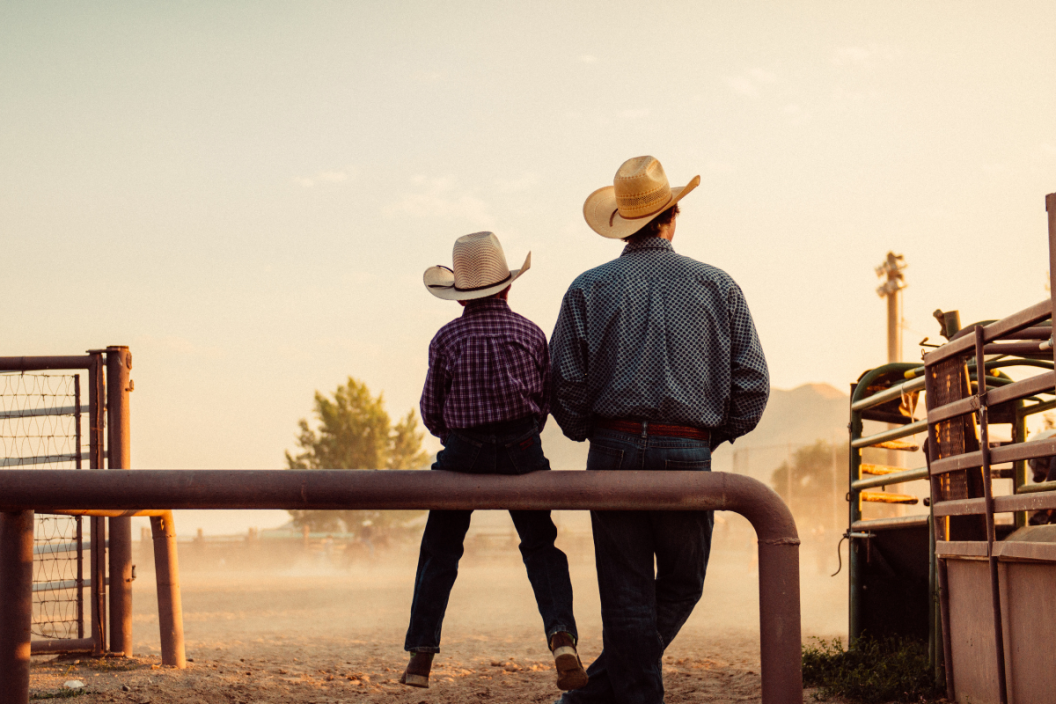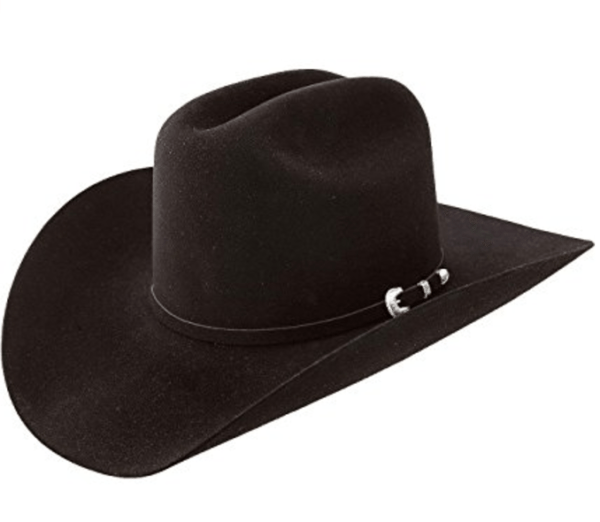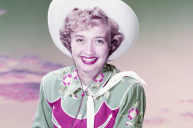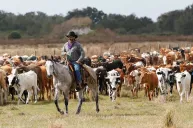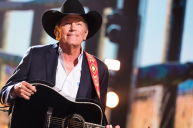The cowboy hat is one of the all-time great, immediately recognizable and evocative items of outerwear. If asked to draw a cowboy, most of us would start (and perhaps end!) with a hastily drawn head with the iconic large-brimmed headwear topped by a tall crown with an indent in the middle, right? It doesn't get much more all-American than a cowboy hat. Of course, like most things labeled all-American, the cowboy hat's origin draws from a variety of cultures and traditions that date back centuries.
According to Tod Bell, owner of Rockin' B Hats, writing for the Standard-Examiner of Ogden, Utah, one of the earliest examples of such a hat dates back to the thirteenth century. Mongolian horsemen wore wide-brimmed hats to shade them from the elements with high crowns to provide extra insulation. Considering the many similarities between cowhands' and ranchers' lives in the Western United States and the lives of nomads of the Mongolian Steppe and Tibetan Plateau, including working with horses and livestock in wide open spaces and requiring clothing and gear that can endure hard work within a variety of weather conditions, it makes sense that their cultures would come to develop and utilize similar headwear (via Maptia).
Another cowboy hat predecessor were the hats worn by Mexican vaqueros. Per History, vaqueros were generally Native North American men who were trained by Spanish colonists who arrived in what is now Mexico starting in 1519. Vaqueros were skilled at riding horses and roping cattle and as Spanish settlers made their way north into what is now Texas, Arizona, New Mexico and California, vaqueros introduced lassos, from the Spanish word "lazo," which means "rope," and leather chaps, which protected riders' legs from the rough and often thorny Western terrain. As for headwear, Mexican sombreros date back to the fifteenth century, according to Britannica, and the name comes from the Spanish word "sombra," or "shade," as the wide brims provided shade from the sun. As reported by True West, a hat known as the "Sugarloaf Sombrero" was particularly popular among cowboys living and working on the Mexico border between 1870 and the 1930s. It was named for the crown's resemblance to the cone-shaped loaves in which sugar was sold at that time.
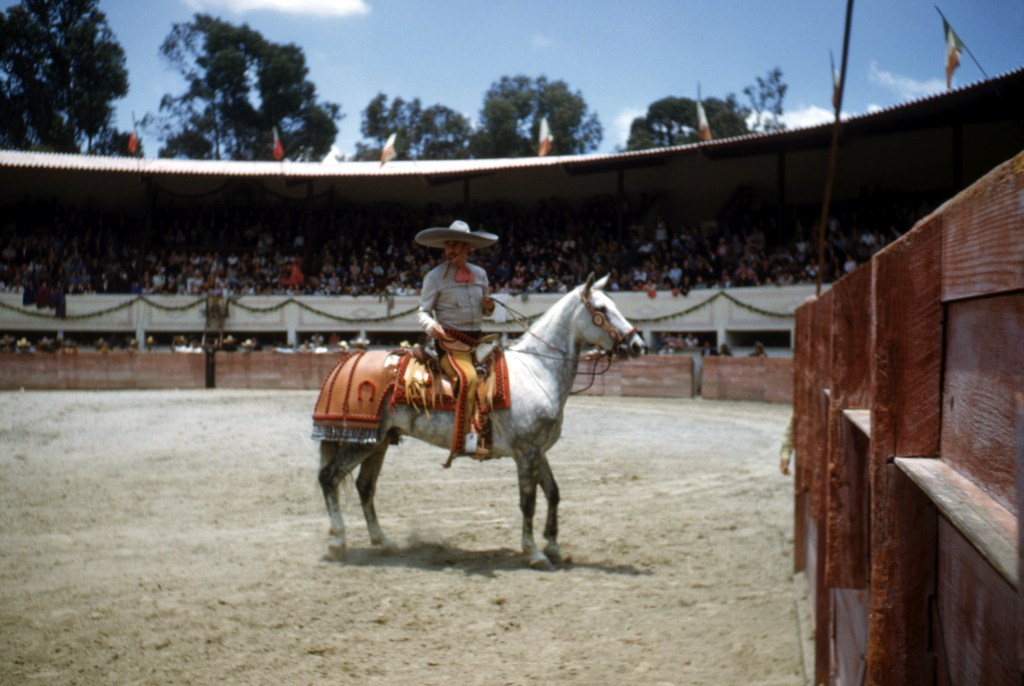
MEXICO CITY - JUNE 1950: A vaqueros rides his horse during a charreada ,mexican rodeo in Mexico City, Mexico. (Photo by Ivan Dmitri/Michael Ochs Archives/Getty Images)
According to The Hatterist, bowler hats, also known as derby hats, were another early cowboy favorite and remained the hat of choice for many men of the wild West into the twentieth century. Bowler hats originated in London, England in 1849 thanks to designers Thomas and William Bowler. A client had requested a hat with a low crown that would be a practical option for the gamekeepers working on horseback at the estate of Thomas Coke, Earl of Leiceister. The gamekeepers had been wearing the more common British top hats, which tended to catch on low-hanging branches and fall off. The style spread in Britain and European colonists brought bowlers to what is now the Western United States. Many late nineteenth and early twentieth century photographs of the West's well-known historical figures feature men in bowler hats, including ones of the infamous Wild Bunch outlaw gang, led by Robert Leroy Parker, better known as Butch Cassidy, and including Harry A. Longabaugh, also known as The Sundance Kid, Ben "The Tall Texan" Kirkpatrick, and Harvey "Kid Curry" Logan. Bowlers made for good Western wear because they stayed firmly on wearers' heads while in windy conditions or, as originally intended, while on horseback.
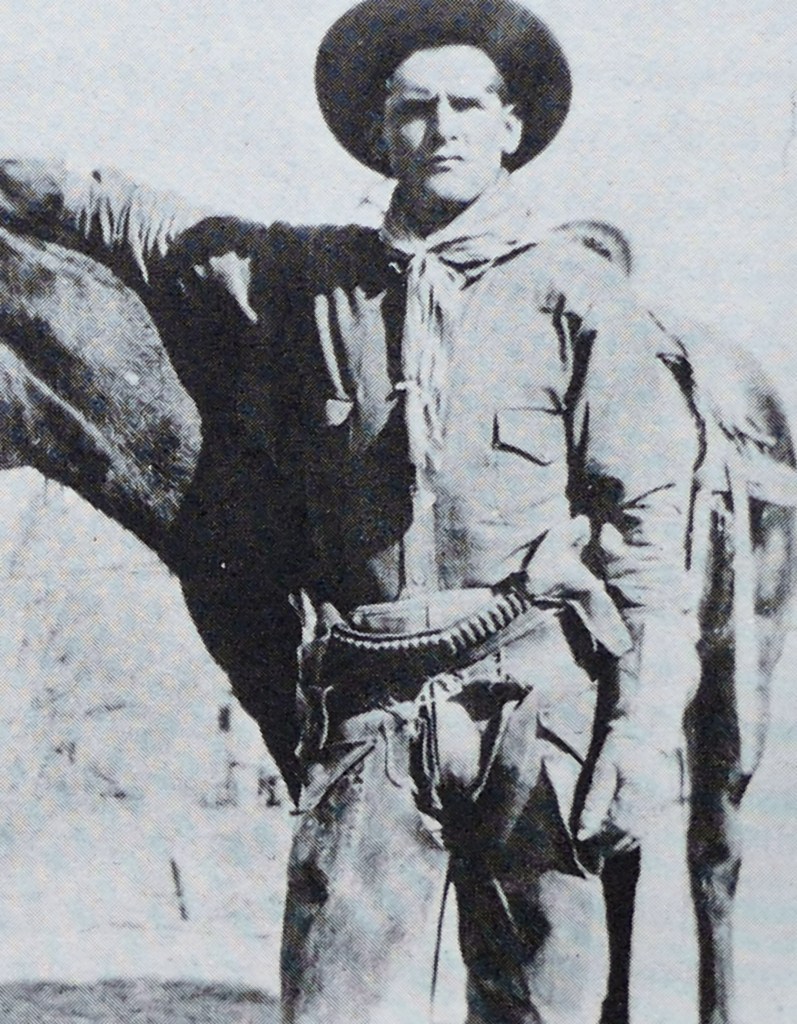
Photographic portrait of Butch Cassidy (1866-1908) an American train robber, bank robber, and leader of the Wild Bunch gang. Dated 19th Century. (Photo by: Universal History Archive/ Universal Images Group via Getty Images)
The Boss of the Plains
In 1865, a hat manufacturer from Philadelphia, Pennsylvania revolutionized the world of cowboy hat design when he created a model known as the "Boss of the Plains." Per the National Cowboy & Western Heritage Museum, the hat had "a round flat brim and smooth, rounded crown" and was made from the fur of small, readily available animals, including rabbits and beaver, which made it particularly durable and able to withstand all sorts of weather conditions. John B. Stetson was born in 1830, the son of a hatter and the seventh in a family of twelve children. He headed west as a young man, per the Stetson company blog, seeking experience, adventure, and relief from tuberculosis, stopping off in Missouri where he worked at and eventually owned a brickyard that was later washed away in a flood. He moved on to Pike's Peak in the Colorado Rockies, hoping to regain his lost fortune in the era's gold rush. In the summer of 1862, a series of storms pelted the region, and Stetson and some friends had to come up with ways to shelter themselves using the skins of the animals they hunted. Stetson used the felting techniques he'd learned from his hatter father to create a tent and a hat. The hat's design made his friends laugh, as its wide brim and tall crown were unusual at the time, but legend has it that a passing traveler bought the hat for five dollars, and so the Stetson, now often used as a synonym for all cowboy hats, was born.
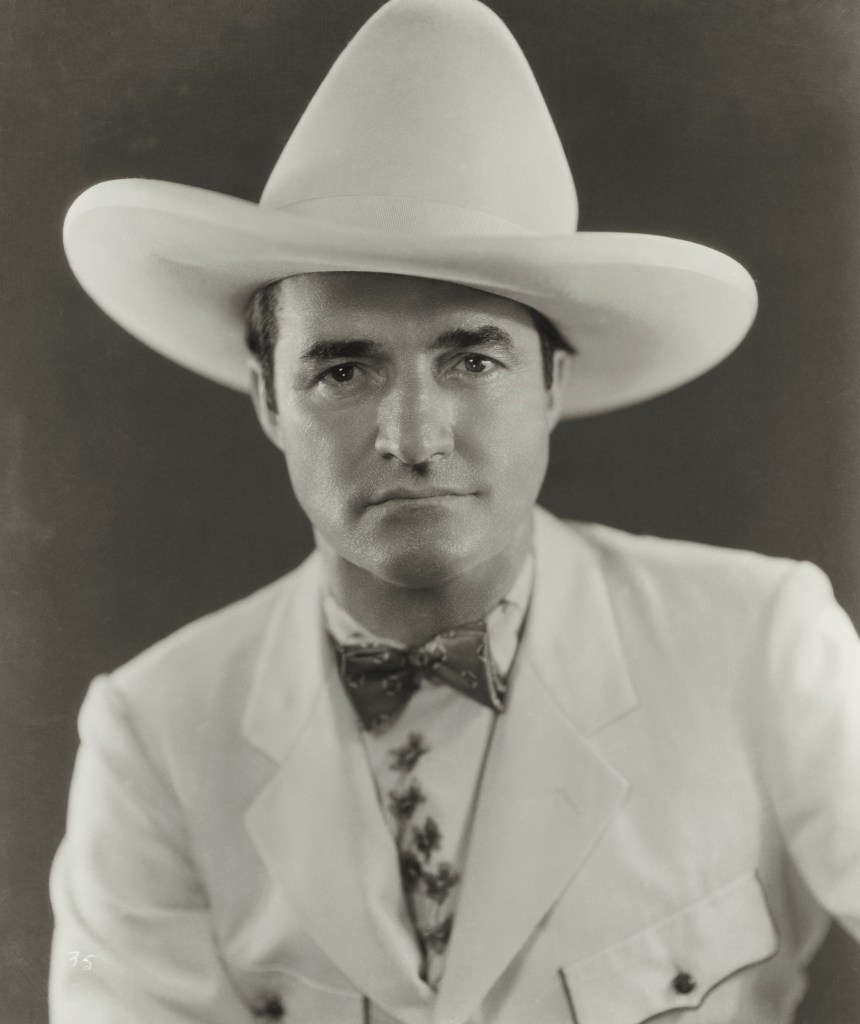
Actor Tom Mix Wearing Cowboy Hat (Photo by © John Springer Collection/CORBIS/Corbis via Getty Images)
Stetson returned to Philadelphia to open his hat-making business. The Stetson blog describes the "Boss of the Plains" hat, which was based on the design of the hat improvised by Stetson in the Rockies, as "a lightweight and all-weather fur felt hat with a high, creased four-inch crown and a wide four-inch brim." According to The Hatterist, by the 1870s cowboys were customizing their hats according to their own tastes and needs; the 1872 Montgomery Ward catalog featured hats with crowns and brims that could be shaped by their owners as they saw fit.
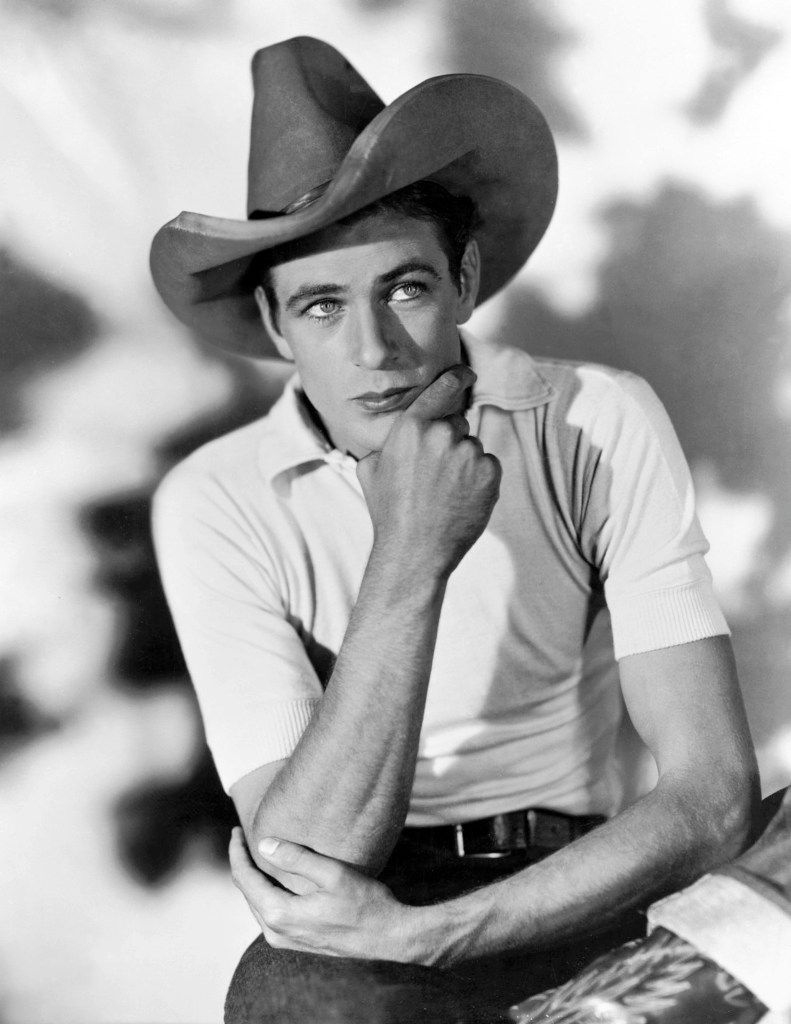
American actor Gary Cooper (Photo by Sunset Boulevard/Corbis via Getty Images)
Stetson went on to sell millions of hats annually over the next fifty years and create many more designs, several of which remain in production today. He was also known as a good and fair executive who paid his workers well, offered profit sharing and building and loan programs, and even built a hospital specifically for Stetson employees and the surrounding community. He died in 1906; his legacy and namesake company carry on.
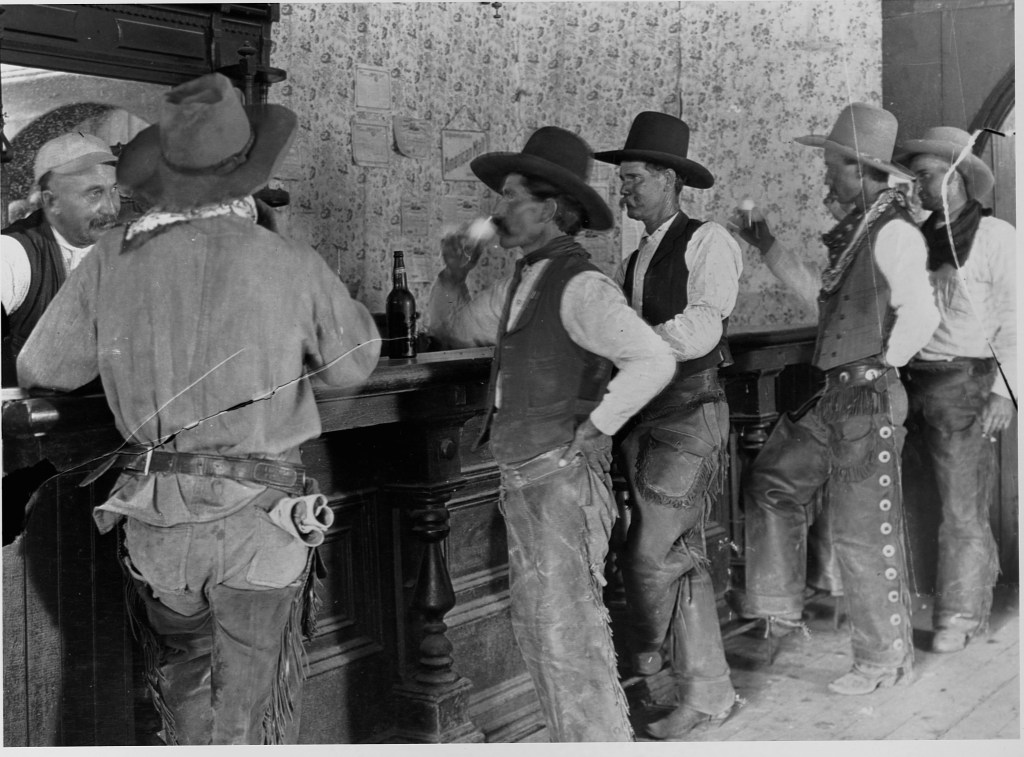
Photo by Erwin E. Smith/Library of Congress/Corbis/VCG via Getty Images
Another common nickname for cowboy hats is "ten gallon hat," and like the rest of Western wear history, there's lots of possible theories as to how this moniker came to be. The Hatterist notes that one popular explanation is that the hat can actually hold ten gallons of water, a theory perhaps strengthened by a popular Stetson ad featuring a cowboy holding up his hat so his horse can drink from it with the tagline "The last drop from his Stetson." Of course, a hat that could hold ten gallons would be too enormous to wear, so while it's an evocative version of the story, it's not accurate. Another theory that references the then-unusually large size of the hat comes from the Spanish word "galón," which refers to a braided hatband. These were popular accessories often worn by vaqueros on their hats, and a "ten galón" hat would be a large hat capable of holding many hatbands. It's possible that English speakers then anglicized this to "ten gallon" to describe their own hats and it stuck. Finally, the Spanish phrase "tan galán" roughly translates to "very handsome," and it's possible that at some point the hats were described this way and "tan galán" in Spanish became "ten gallon" in English.
Our Favorite Hats
Resistol Denison Bangora Straw Cowboy Hat

HatCountry, $42.00
Bullhide Kingman Wool Cowboy Hat
HatCountry - $59.98
Stetson Stoney Creek Straw Cowboy Hat
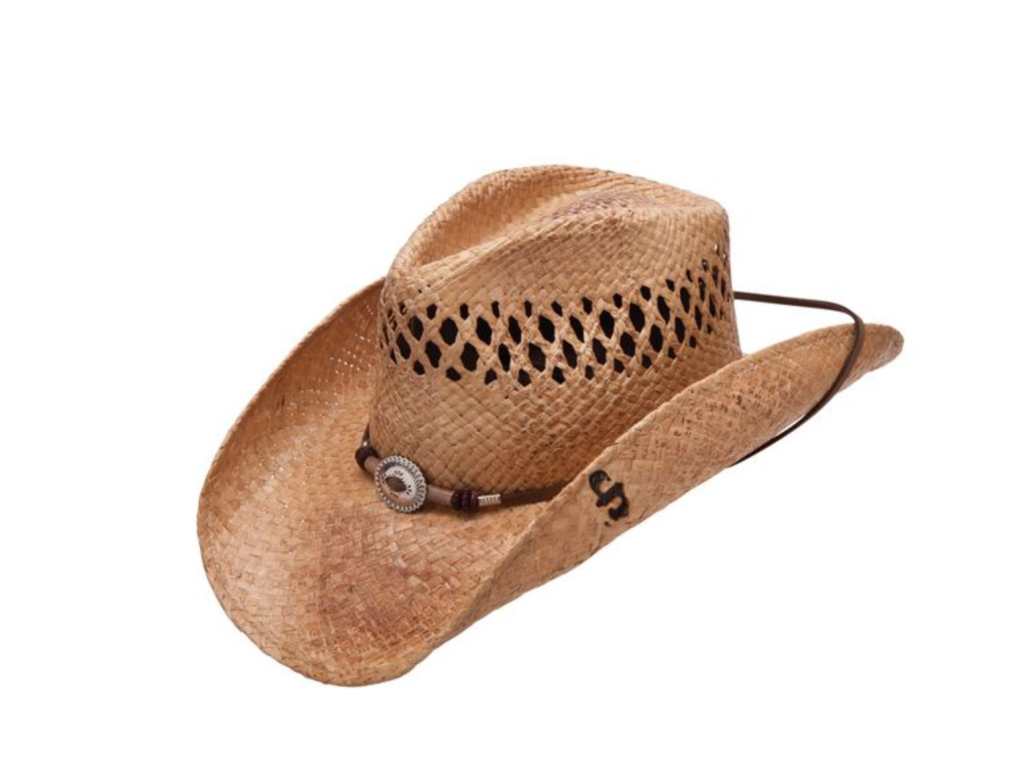
HatCountry - $59.98
Editor's Note: Products featured on Wide Open Country are independently selected by our editors. However, when you buy something through our links, we may earn a commission.
